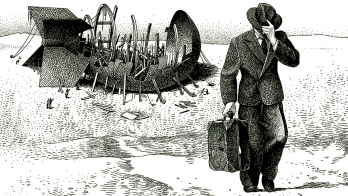Robert Aymar on the start-up of the LHC.

On 10 September the world watched as protons travelled around the ring of the Large Hadron Collider for the very first time – in both directions. Now, only a month later, we are able to celebrate another major event for CERN and the particle physics community world wide, with the official inauguration of the LHC on 21 October.
The start-up of the LHC marks the end of an eventful journey from the first ideas, through the long stages of planning and approval, construction and commissioning, to the start of operations. It began in 1984 with a debate on the possible objectives of a future accelerator, based on the state of our knowledge at that time. The CERN Council then approved the construction of the LHC in 1996, giving the go-ahead for the work that has now reached completion.
For the past 12 years, physicists, engineers and technicians from CERN and its associated institutes have been engaged in constructing the three pillars of the LHC: the accelerator (including the upgrade of the existing accelerator chain), the four experiments, and the computing infrastructure needed to store and analyse the data. An enormous amount of effort has gone into these three major endeavours and we are all about to reap the fruits of those labours.
As the current director-general of CERN I feel tremendous pride in the commitment and dedication shown by everyone at CERN, at its partner institutions in the member states and non-member states, and at the many contractors involved, in overcoming the various hurdles on the way to completing this unique endeavour.
What lies ahead is more important still, as the LHC is poised to generate new knowledge that we will share with the whole of mankind. For that is precisely why CERN was founded – to restore Europe to its place at the forefront of science and, in particular, at the forefront of physics.








